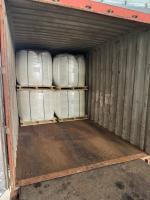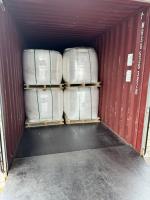Our Products
Polyacrylamide / Anionic polyacrylamide(A4030)used for construction bored piling

Anionic polyacrylamide(A4030)used for construction bored piling
A4030 is a kind of anionic polyacrylamide with very high molecular weight and high hydrolysis degree mainly used for construction.
Anionic polyacrylamide (APAM) is a water-soluble polymer that has found extensive applications in various industries, particularly in construction and civil engineering. One significant application of APAM is in bored piling, which is a foundational technique used in constructing structures such as buildings, bridges, and other heavy civil works. This detailed exploration of APAM's applications in bored piling will cover its functions, benefits, and considerations.
1. Overview of Bored Piling
Bored piling, also known as drilled shaft or cast-in-situ piling, involves the excavation of a cylindrical hole in the ground, followed by the placement of reinforcement and concrete. This method is crucial for ensuring the stability and load-bearing capacity of structures, especially in weak or variable soil conditions. The use of bored piles allows for deep foundation systems that can reach significant depths, providing resistance to vertical and lateral loads.
2. Role of Anionic Polyacrylamide
APAM plays several critical roles in the bored piling process:
-
Soil Stabilization: During the boring process, soil can become unstable, leading to collapse or excessive seepage. APAM enhances soil stability by improving the cohesion of soil particles, reducing the risk of caving in the borehole.
-
Viscosity Modifier: APAM increases the viscosity of drilling fluids, which helps to create a stable slurry. This slurry aids in the removal of cuttings from the borehole and helps maintain the integrity of the borehole walls.
-
Fluid Loss Control: One of the primary challenges in bored piling is controlling fluid loss to the surrounding soil. APAM minimizes the permeability of the slurry, reducing the amount of fluid lost into the surrounding soil and maintaining the necessary pressure in the borehole.
3. Benefits of Using APAM in Bored Piling
The incorporation of APAM in bored piling operations offers numerous benefits:
-
Improved Operational Efficiency: The use of APAM allows for faster and more efficient drilling operations. By stabilizing the soil and enhancing the properties of the drilling fluid, crews can operate with reduced downtime and increased productivity.
-
Reduced Environmental Impact: APAM is environmentally friendly and biodegradable, making it a suitable choice for construction projects that prioritize sustainability. Its use minimizes the risk of contamination in surrounding soil and water.
-
Cost-Effectiveness: By improving the efficiency of the bored piling process and reducing the need for additional stabilizing agents, APAM can lead to cost savings in both materials and labor.
-
Enhanced Safety: The stability provided by APAM reduces the risks associated with collapsing boreholes, improving safety for workers on-site.
4. Application Techniques
To effectively utilize APAM in bored piling, specific application techniques are employed:
-
Preparation of Slurry: APAM is mixed with water to create a slurry that can be injected into the borehole. The concentration of APAM can be adjusted based on the soil conditions and specific project requirements.
-
Injection During Drilling: As the borehole is drilled, the APAM slurry is continuously injected to maintain pressure and support the walls of the borehole. This helps in removing cuttings and preventing collapse.
-
Post-Drilling Application: After drilling, the APAM slurry can be used to fill the borehole before the placement of reinforcement and concrete. This can enhance the bonding between the concrete and the surrounding soil.
5. Challenges and Considerations
While APAM has significant benefits, there are challenges and considerations to keep in mind:
-
Selection of Polymer Grade: The effectiveness of APAM can vary depending on its molecular weight and charge density. It is essential to select the appropriate grade of APAM to match the specific soil conditions and project requirements.
-
Dosage Optimization: The concentration of APAM must be optimized to balance viscosity and fluid loss control without compromising the workability of the slurry.
-
Monitoring Environmental Impact: Although APAM is environmentally friendly, its use in large quantities requires careful monitoring to ensure that there are no adverse effects on local ecosystems.
6. Case Studies and Real-World Applications
Several case studies illustrate the successful application of APAM in bored piling projects:
-
Urban Infrastructure Projects: In urban areas, where space is limited, and soil conditions can vary significantly, APAM has been used to stabilize bored piles for high-rise buildings. The improved operational efficiency and safety provided by APAM have made it a preferred choice for contractors.
-
Bridges and Overpasses: In the construction of bridges and overpasses, APAM has been employed to enhance the load-bearing capacity of bored piles. The polymer's ability to maintain borehole stability has proven essential in challenging geological conditions.
-
Waterfront Developments: Waterfront projects, such as piers and marinas, often face unique challenges related to soil instability and water ingress. APAM's use in these projects has helped mitigate risks and ensure the integrity of foundations.
7. Future Trends in the Use of APAM in Bored Piling
As construction technology continues to evolve, the use of APAM in bored piling is expected to grow. Future trends may include:
-
Advancements in Polymer Technology: Ongoing research into polymer chemistry may lead to the development of more effective APAM formulations, enhancing performance in specific soil conditions.
-
Integration with Smart Technologies: The integration of smart technologies and monitoring systems can provide real-time data on soil conditions, allowing for more precise control over the application of APAM during the bored piling process.
-
Sustainable Practices: As sustainability becomes a priority in construction, the demand for environmentally friendly solutions like APAM will likely increase, promoting further research and innovation in this area.
Conclusion
Anionic polyacrylamide plays a pivotal role in the success of bored piling operations, offering a range of benefits that enhance efficiency, safety, and environmental responsibility. By stabilizing soil, controlling fluid loss, and improving the overall performance of drilling fluids, APAM has become an indispensable tool in modern construction practices. As the industry continues to advance, the applications of APAM in bored piling are poised to expand, leading to safer and more efficient foundation solutions for a wide range of structures.




434_small.jpg)
